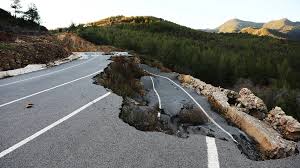
Earthquakes strike without warning, leaving destruction, injury, and fear in their wake. Despite decades of research, scientists still cannot predict exactly when or where the next major quake will occur. Understanding why requires looking at the complexity of our planet, the limits of technology, and the unpredictable behavior of tectonic plates.
1. The Nature of Earthquakes
Earthquakes happen when stress builds up along fault lines—cracks in the Earth’s crust—and is suddenly released. This release of energy sends shockwaves through the ground, sometimes causing massive damage. But the process is influenced by countless variables: rock composition, fault geometry, fluid pressure underground, and interactions with other nearby faults.
2. The Challenges of Prediction
While meteorologists can forecast storms days in advance, earthquake prediction is much harder because:
- Faults behave unpredictably: Stress accumulates over decades or centuries, and there’s no consistent warning signal.
- No reliable precursors: Some minor tremors or gas emissions occur, but they don’t always precede large quakes.
- Underground complexity: Earth’s crust is opaque; measuring stress and strain at depth is extremely difficult.
- Historical data is limited: Even well-studied regions may experience earthquakes that defy past patterns.
3. Current Prediction Methods
Scientists are not entirely powerless. They use several approaches to estimate earthquake risk:
- Seismic monitoring: Detecting small tremors to identify stressed fault areas.
- GPS and satellite data: Tracking plate movements to model stress buildup.
- Historical analysis: Studying past quakes to identify patterns or high-risk zones.
- Early warning systems: These don’t predict earthquakes but can detect seismic waves seconds before shaking reaches cities, allowing limited protective measures.
4. Why Early Warnings Matter
Even a few seconds of warning can save lives:
- People can drop, cover, and hold on.
- Trains and industrial machinery can automatically shut down.
- Hospitals can secure critical equipment and protect patients.
While this is not full prediction, it’s the closest technology currently available to reducing earthquake damage.
5. The Future of Earthquake Prediction
Researchers are exploring new possibilities:
- AI and big data: Machine learning could detect subtle signals missed by humans.
- Deep underground sensors: Arrays that monitor stress changes in real time.
- Earthquake “forecasting” models: Estimating probability ranges over months or years rather than exact times.
The hope is that one day, earthquakes may be forecasted with meaningful precision, though exact timing may always remain elusive.
Final Thoughts
Earthquakes remind us that despite all our scientific advances, Nature still holds secrets. While accurate prediction remains out of reach, early warning systems, preparedness, and understanding risk can save lives and reduce destruction. Science is making progress, but for now, the planet keeps its timetable hidden.